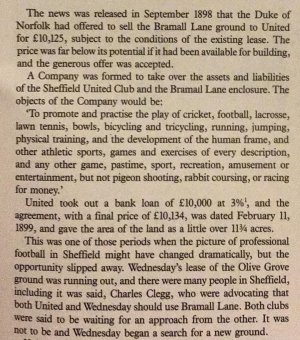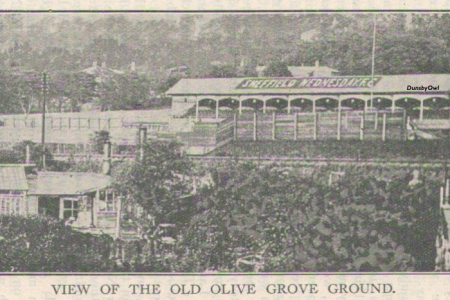Sheffield, I suppose, could justly claim to be called the ugliest town in the Old World: its inhabitants, who want it to be pre-eminent in everything, very likely do make that claim for it. It has a population of half a million and it contains fewer decent buildings than the average East Anglian village of five hundred. And the stench! If at rare moments you stop smelling sulphur it is because you have begun smelling gas. Even the shallow river that runs through the town is usually bright yellow with some chemical or other. Once I halted in the street and counted the factory chimneys I could see; there were thirty-three of them, but there would have been far more if the air had not been obscured by smoke. One scene especially lingers in my mind. A frightful patch of waste ground (somehow, up there, a patch of waste ground attains a squalor that would be impossible even in London) trampled bare of grass and littered with newspapers and old saucepans. To the right an isolated row of gaunt four-roomed houses, dark red, blackened by smoke. To the left an interminable vista of factory chimneys, chimney beyond chimney, fading away into a dim blackish haze. Behind me a railway embankment made of the slag from furnaces. In front, across the patch of waste ground, a cubical building of red and yellow brick, with the sign ‘Thomas Grocock, Haulage Contractor’.
It seems to me, by daylight, one of the most appalling places I have ever seen. In whichever direction you look you see the same landscape of monstrous chimneys pouring forth smoke which is sometimes black and sometimes of a rosy tint said to be due to sulphur. You can smell the sulphur in the air all the while. All buildings are blackened within a year or two of being put up. Halting at one place I counted the factory chimneys I could see and there were 33. But it was very misty as well as smoky - there would have been many more visible on a clear day. I doubt whether there are any architecturally decent buildings in the town.
The town is very hilly (said to be built on seven hills, like Rome) and everywhere streets of mean little houses blackened by smoke run up at sharp angles, paved with cobbles which are purposely set unevenly to give horses etc., a grip. At night the hilliness creates fine effects because you look across from one hillside to the other and see the lamps twinkling like stars. Huge jets of flame shoot periodically out of the roofs of the foundries (many working night shifts at present) and show a splendid rosy colour through the smoke and steam. When you get a glimpse inside you see enormous fiery serpents of red-hot and white-hot (really lemon coloured) iron being rolled out into rails. In the central slummy part of the town are the small workshops of the 'little bosses', i.e. smaller employers who are making chiefly cutlery. I don't think I ever in my life saw so many broken windows. Some of these workshops have hardly a pane of glass in their windows and you would not believe they were inhabitable if you did not see the employees, mostly girls, at work inside.
The town is being torn down and rebuilt at an immense speed. Everywhere among the slums are gaps with squalid mounds of bricks where condemned houses have been demolished and on all the outskirts of the town new estates of Corporation houses are going up. These are much inferior, at any rate in appearance, to those at Liverpool. They are in terribly bleak situations, too. One estate just behind where I am living now, at the very summit of a hill, on horrible sticky clay soil and swept by icy winds. Notice that the people going into these new houses from the slums will always be paying higher rents; and also will have to spend much more on fuel to keep themselves warm. Also, in many cases, will be further from their work and therefore spend more on conveyances.
At night, when you cannot see the hideous shapes of the houses and the blackness of everything, a town like Sheffield assumes a kind of sinister magnificence. Sometimes the drifts of smoke are rosy with sulphur, and serrated flames, like circular saws, squeeze themselves out from beneath the cowls of the foundry chimneys. Through the open doors of foundries you see fiery serpents of iron being hauled to and fro by redlit boys, and you hear the whizz and thump of steam hammers and the scream of the iron under the blow.
When you contemplate such ugliness as this, there are two questions that strike you. First, is it inevitable? Secondly, does it matter?


